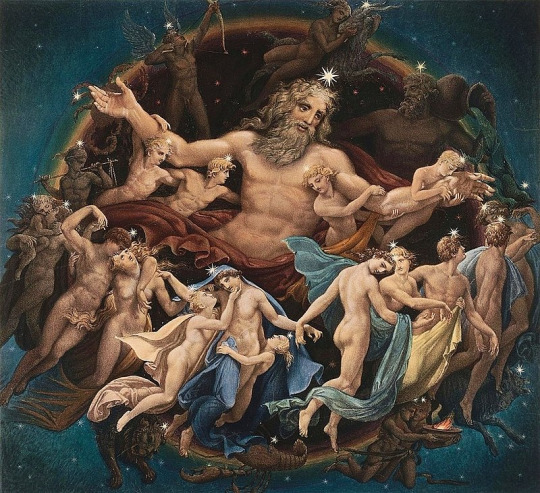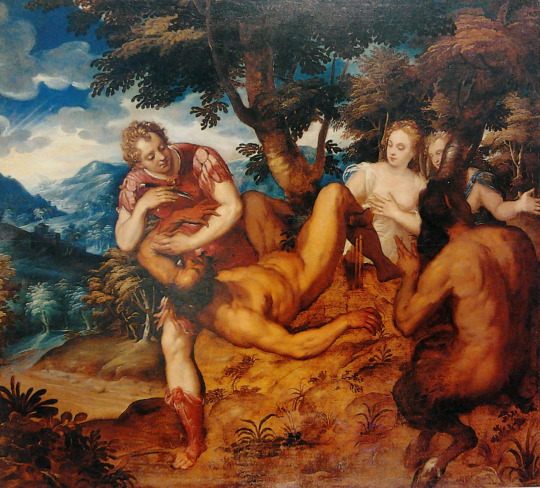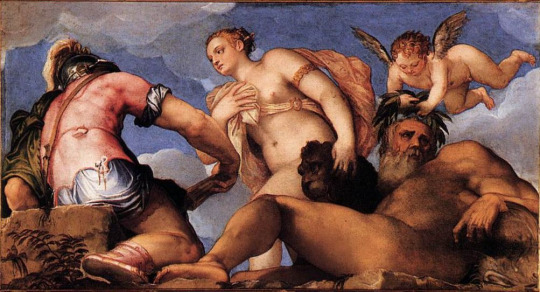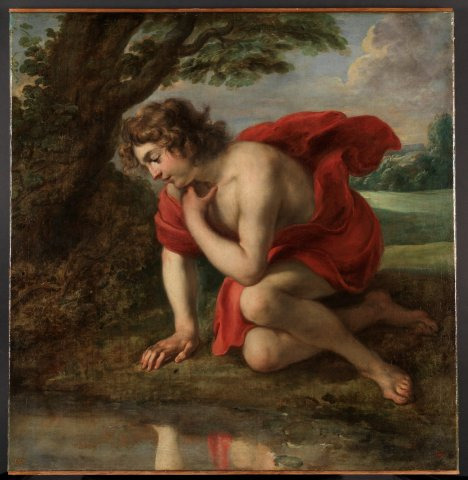#Narcissus by Jan Cossiers
Explore tagged Tumblr posts
Note
I'm shy so anon but love love LOVE your stories and drawings and honestky please keep it up thank you your content is great and I'm positive your hair is very shiny and soft and if ur bald or whatever that your scalp is also shiny and soft (idk if that's a thing people look for in a scalp but either way you are amazing)
Thank you for your compliments anon, however I would advise you to be careful when gazing upon my bald scalp. I know it is an entrancing sight, yet legend has it that whoever stares at their reflection against my shiny head for too long may risk bad things happening. Some even go as far as to say that the souls of the poor victims will be banished into the cuck chasm in their afterlife. I’d think they’re exaggerating, but one can never be too cautious.

37 notes
·
View notes
Text
The Art of the Myth (5)
Here is a very beautiful piece by Karl Friedrich Schinkel: Ouranos and the Dance of the Stars (1883/1884)

Then we have two paintings by Giovanni Battista Zelotti, representing the Venitian painting of the Renaissance. A first painting known as “Apollo flaying Marsyas” (or The Punishment of Marsyas). Beyond Apollo apparently starting to go bald ( but I am sure it is just a re-using of the traditional painting idea that “a bigger and greater forehead means intelligence and nobility”), I love how everybody around is very chill and okay with the flaying. The nymphs just look passively, and the satyr nearby holds his hand like “See? That’s what’s going to happen if you don’t behave!”. And I do have to say I always adore these deep landscape perspective with unusual colors - this blue valley seems so fantastical.

The only other mythological piece of Zelotti I could find was this one: “Venus between Mars and Neptune”. It was a decoration for the ceiling of a hall in the Dukal Palace of Venise, and I don’t think it represents any particular myth, or if it represents a trinity it must be one belonging to Roman mythology that I do not know of. I would rather believe it is an allegory for Venice’s very own civilization, with Venus (beauty of Venice) being born out of the efforts of glorious military (Mars) and the sea business (Neptune). I’m sure there’s something to say about Venus holding a lion’s head (maybe tied to Venise’s emblems? I don’t know enoug about Renaissance Venise...)

And let’s end our turn with Jan Cossiers, a baroque Flemish painter of the 17th century. I only got three of his paintings - he did a “Satyr welcomed by peasants” one I would have loved to include, but couldn’t find a good online version. So let’s simply enjoy his Narcissus:

... with the interesting choice of NOT depicting the reflection of Narcissus (which is quite unusual for a painting about the theme ; he juts hints at it).
Then his famous “Prometheus stealing fire”:

... with a Super-Mustache Prometheus.
And finally one of his most striking pieces: “Jupiter and Lycaon”

... with a Jupiter that looks like a cross between Jesus and Christopher Lee, a Lycaon straight out of a Red Riding Hood nightmare, and a friggin terrifying angry eagle (in fact it is quite funny how Jupiter also seems to be shielding Lycaon from the eagle’s wrath).
#the art of the myth#greek mythology#painting#art#jupiter#zeus#lycaon#prometheus#narcissus#ouranos#marsyas#apollo#roman mythology#venus#neptune#jan cossiers#karl friedrich schinkel#giovanni battista zelotti
16 notes
·
View notes
Text

Narciso, por Jan Cossiers, óleo sobre lienzo, 1636-38
37 notes
·
View notes
Photo

Vanity - acrylic painting - 6″x6″ mdf - robert matejcek - 2022
“You had one eye in the mirror, as you watched yourself gavotte…"
- Carly Simon - You're So Vain
tags:
#robert matejcek#acrylic painting#small scale#trompe l'oeil#narcissus#greek mythology#mythological#allegorical#figurative#jan cossiers#1636-1638#art#my art#artists on tumblr
6 notes
·
View notes
Photo

Jan Cossiers (1600-1671) - Narcissus
24 notes
·
View notes
Text
How Do I Love Me? Let Me Count the Ways
Ausonius, Epigrammata de diversis rebus 99 “Ad Narcissum qui sui ipsius amore captus erat” If you desired another, Narcissus, you could have him. But as things stand, you have a surfeit of love, yet none of its fruits. Si cuperes alium, posses, Narcisse, potiri. nunc tibi amoris adest copia, fructus abest.

Narcissus, Jan Cossiers (1600-1671)
#classics#tagamemnon#Latin#lingua latina#poem#poetry#translation#Latin language#Latin translation#Ausonius#Ausonius of Bordeaux#Ancient Rome#Roman Empire#Late Roman Empire#late antiquity#classical mythology#Narcissus#epigram#Jan Cossiers
191 notes
·
View notes
Text







Narcissus, Jan Cossiers, 17th century / Narcissus', Mat Collishaw, 1990 / Echo and Narcissus, Nicolas Poussin c. 1630 / Echo and Narcissus, John William Waterhouse, 1903 / Narcissus, Michelangelo Caravaggio, 1594-1596 / Narcissus And Echo, Placido Costanzi, 18th century / Narcissus, fresco from Pompeii, before 79
#narcissus#greek myths#greek mythology#ancient greek#mythology#narcissus and echo#ancient greece#mythology aesthetic#greek myth#greek myth aesthetic#echo#michelangelo caravaggio#art#paintings#fresco#mosaic#ancient art#pompeii#tate#self portrait
21 notes
·
View notes
